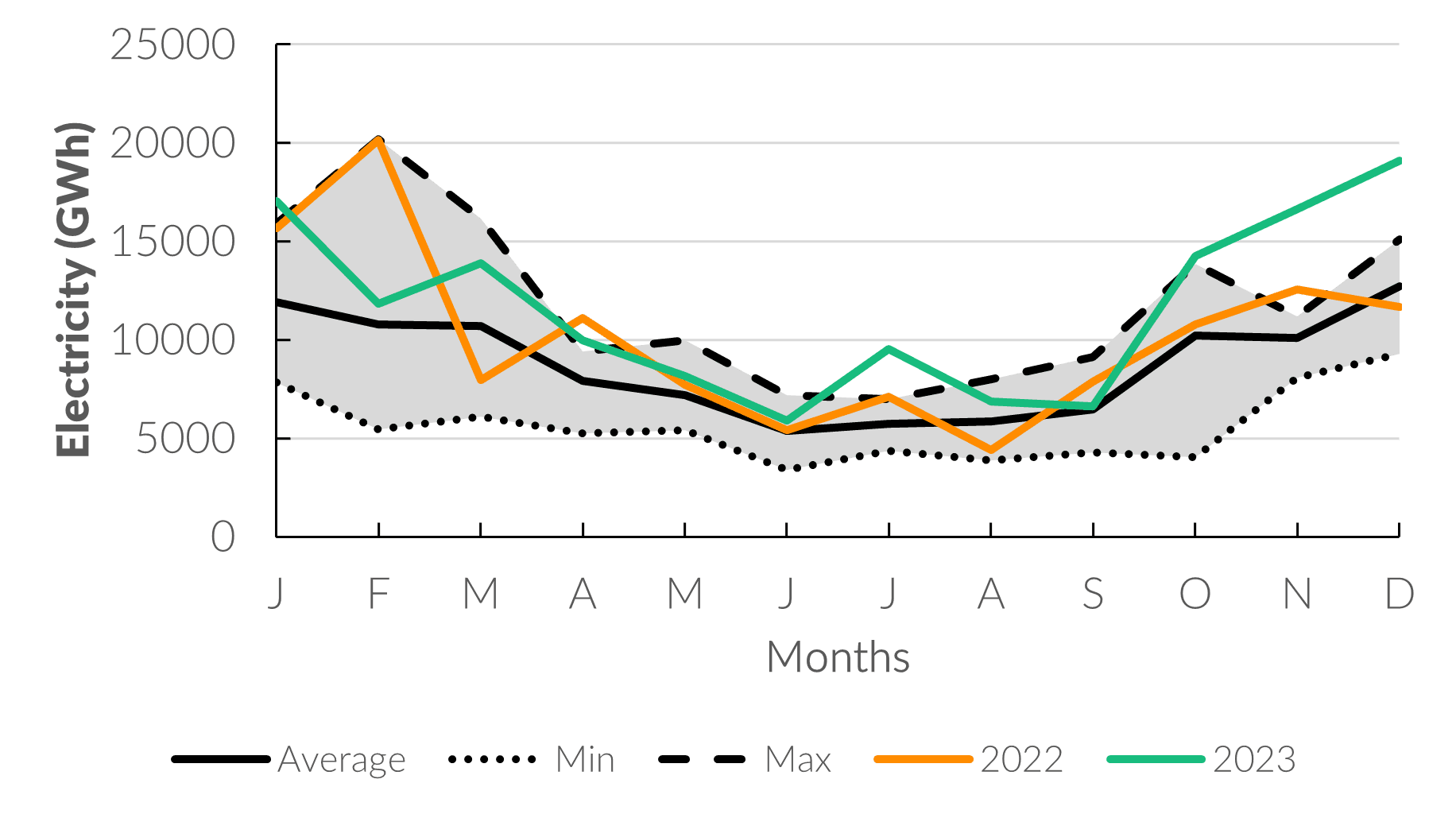04.03.2024 / 11:00
Weather Forecasts and Energy
Energy Markets

This is the first article in our new series on #WeatherwiseEnergy, where we will be taking a deep dive into the various dynamic touch points between the energy sector and the weather conditions. Changing weather conditions play a key and increasingly important role in the energy sector, especially considering the increased proliferation of variable renewable energy into power networks. Indeed, weather conditions at times scales of hourly to seasonal affect the supply and demand of energy drives market volatility and impacts system operations. In this article, we focus on the potential role of seasonal weather forecasts in the energy sector.
Weather Forecasts
Seasonal weather forecasts describe the average weather that is likely to occur for a particular season. Due to their inherent nature and long-term prediction horizon, seasonal forecasts generally have less skill compared to short-term forecasts. Seasonal forecasts describe pro-
babilistic outcomes of forecast categories and do not contain any direct information on short-lived extreme weather events such as heavy rainfall or snowstorms. The accuracy of these forecasts varies from one region to another, but a forecast with any skill is likely to be more reliable than climatological data and considers weather anomalies due to climate change.
Predicting Supply and Demand
Seasonal changes in weather conditions influence the supply and demand of energy. It is well known that during winter months the demand for energy increases due to higher heating demands. In 2022, gas prices across Europe were at record highs due to supply constraints and fears of gas shortages. The sufficient supply of gas throughout the winter in Germany was largely attributed to full gas storage (Figure 1), lower demand and milder temperatures.

Figure 1: Gas storage levels in Germany for 2018 – 2023 (adapted from Aggregated Gas Storage Inventory).
Seasonal changes in weather conditions have a significant effect on energy generation from renewable sources such as wind and solar. Wind power generation is highest during autumn and winter months (Figure 2) due to the more frequent passage of low-pressure systems and the associated higher wind speeds. In 2023, wind power generation was 14.1% higher (Figure 2) than compared to 2022, largely due to favourable weather conditions.

Figure 2: Total wind power production in Germany for 2015 – 2023 (adapted from Energy-charts).
Power generated from wind turbines is dependent on the wind-speed (Figure 3). In low or very high wind speed conditions, power generation will be limited. Generally, power generation increases with wind speed. However, once the wind speed exceeds the cut-out wind speed of the turbine, the turbine will stop operating in order to protect the components.

Figure 3: Power curve for a Nordex N80 Alpha 2.5MW wind turbine (Adapted from wind-turbine-models).
On the other hand, during the spring and summer months (Figure 4), solar power generation is highest in Germany. Weather patterns such as the European or Scandinavian Blocking patterns are associated with high-pressure systems which result in clear skies and low wind speeds. In 2022 and 2023, there were 30% and 15% more sunshine hours compared to the reference period. The above-average sunshine hours and continued expansion of solar photovoltaic plants resulted in above-average solar energy production (Figure 4).

Figure 4: Total solar power production in Germany for 2015 – 2023 (adapted from Energy-charts).
The examples given above illustrate the importance of seasonal forecasts. The accurate forecasting of anomalous seasons would allow system operators to efficiently manage the network and decrease the volatility of the energy market. Especially in cases when other energy sources (gas, nuclear, etc.) are limited or unpredictable.
Development
Seasonal forecasts are limited by forecast skill and reliability. Currently, researchers are developing hybrid models aimed at the energy sector. Hybrid models combine the physics of dynamical models and statistical relationships between circulation patterns and surface variables. The statistical relationship between circulation patterns and surface variables is known as teleconnections and can explain 30% of the observed variability in seasonal forecasts. In a recent study, researchers found that using a hybrid model to generate a seasonal forecast improved the predictability of extreme events, wind speed during winter and spring months and radiation in winter, spring, and summer months.
Conclusion
Regardless of the energy source, the weather will continue to play an important role in the energy sector. The improvement of seasonal weather forecasts and their application can lead to a more efficient system operation and decreased market volatility.



